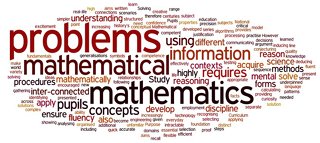So… a new school year, a new class (probably) and a new curriculum. There are two quite different views of the 2014 NC maths programmes of study. The media give the impression that it is tough and rigorous and from this, perhaps, a return to traditional teaching methods, but most professionals see it as an opportunity for teachers to take control of their teaching.
The last time there was a new curriculum was back in September 1989 with the shelf full of files for the first National Curriculum. I remember it well – a whole new vocabulary of key stages, core and foundation subjects and programmes of study was introduced to us. It was the start of a slippery slope towards a standards and attainment fixation in education.
However, some things remain a constant - teaching is largely about teachers inspiring their children to learn, regardless of the curriculum. A new school year is a good time to bear that in mind.
However, some things remain a constant - teaching is largely about teachers inspiring their children to learn, regardless of the curriculum. A new school year is a good time to bear that in mind.
So will this new curriculum really make a difference?
Well actually that is up to you, the teachers.
If you focus on the body of knowledge, concepts and skills within the maths programmes of study for KS1 and KS2, then there are changes that I would not have included, especially a return to learning multiplication facts to 12x12 and Roman numerals. Take a full look at the changes however, and it is not such a radical difference.
Take a look at the 'What has changed in the new National Curriculum?', there is a chart that compares the changes year by year for you to download.
The DfE has insisted that the new curriculum is not prescriptive and, when you read the document, there is no guidance on how the maths PoS should be taught (unlike the Numeracy Strategy).
I believe it is this opportunity to make decisions on our teaching approach, rather than the content being taught, that is likely to have a greater impact on children's learning.
An example of this is the return to a single ‘efficient’ written calculation method. If we consider long multiplication, does this mean that we no longer teach the grid method of multiplication? I would argue that children may eventually end up using the single long multiplication column method, as many adults would, however the grid method is a useful step towards this and shouldn't be discarded. It helps children understand place value within multiplication - often the cause of adult mistakes using this method.
It seems the differing views of the new NC are over language and interpretation rather than actual content. If you favour a transmission model of teaching, you might see the emphasis on fluency as an opportunity to take a ‘Gradgrind’ approach to practice – dull repetition and the acquisition of facts, perhaps without understanding. But viewed differently, using a connectionist or discovery approach (Askew et al 1997), practice can involve diverse, interesting and regular use of mathematical skills, procedures and knowledge.
Which way will this new curriculum be delivered? Well, that is up to the professionals – the teachers. To me, this seems an excellent opportunity to teach maths creatively – in context and in depth.
Did you know?
The words ‘practice’ or ‘practise’ appears 27 times in the KS1 and KS2 maths PoS
Is this a return to endless sheets of dull repetitive questions?
It doesn’t have to be. Mathematical fluency is important and to achieve this children need time to consolidate their learning, with regular opportunities to use their new skills in a variety of situations.
A mix of open tasks, quick activities and practical exploration keeps motivation high and allows children to practise in different ways.
The words ‘connect’ or connections’ appear 25 times in the KS1 and KS2 maths PoS
Making connections helps children make sense of the mathematics. Look at the objectives and success criteria for a unit of work and then see how they can be connected through the language used, models and images.



